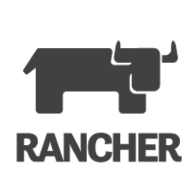

Rancher Labs and Red Hat OpenShift Container Platform compete in the container management category. Rancher Labs offers simplicity and ease of use, making it suitable for those seeking efficient deployment without extensive Kubernetes expertise, whereas OpenShift provides a feature-rich ecosystem for enterprises needing advanced capabilities.
Features: Rancher Labs offers ease of deployment, rolling upgrades, and seamless management due to its open-source nature. OpenShift provides built-in security, extensive integrations, and enterprise-grade features like service mesh and cluster management.
Room for Improvement: Rancher Labs could enhance upgrade stability, tool integration, and automatic security features. OpenShift may benefit from better documentation, pricing adjustments, and improved deployment speed during execution.
Ease of Deployment and Customer Service: Rancher Labs facilitates straightforward deployments in various environments, backed by community support. OpenShift's extensive options may add complexity but are offset by structured support channels for intricate setups.
Pricing and ROI: Rancher Labs provides a cost-effective alternative with minimal fees, promising ROI through time and cost savings. Although priced higher, OpenShift justifies its cost with robust security and features, offering value for enterprises investing in performance enhancement.


Rancher Labs build innovative, open source software that makes it easy to deploy and manage containers in production on any infrastructure. We enable organizations to accelerate all aspects of their software development pipeline, from writing and testing code to running complex microservices-based applications.
Rancher, our flagship container management platform, allows users to easily manage all aspects of running containers in development and production environments, on any infrastructure. With well over four million downloads, Rancher has quickly become the tools of choice for teams serious about running containers in production. This includes large enterprises such as Sony, IBM, Tyco, Align Technologies and more.
Red Hat® OpenShift® offers a consistent hybrid cloud foundation for building and scaling containerized applications. Benefit from streamlined platform installation and upgrades from one of the enterprise Kubernetes leaders.
We monitor all Container Management reviews to prevent fraudulent reviews and keep review quality high. We do not post reviews by company employees or direct competitors. We validate each review for authenticity via cross-reference with LinkedIn, and personal follow-up with the reviewer when necessary.